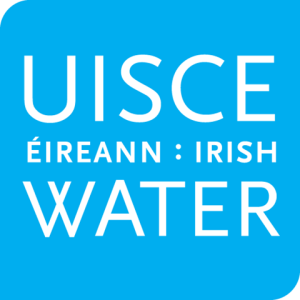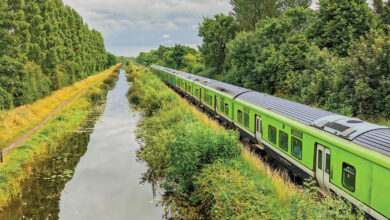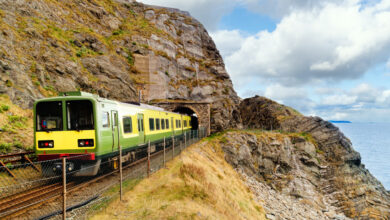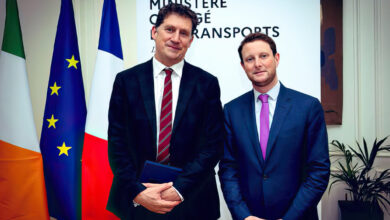Delivering the water infrastructure Ireland needs
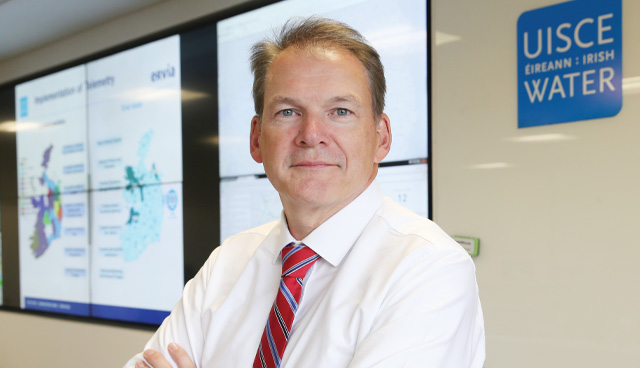
Irish Water Managing Director Niall Gleeson reflects on his first two years leading the water utility and looks to the future of water services.
Casting an eye over his two years as Managing Director of Irish Water, Niall Gleeson says that it would be “an understatement to say that they have been eventful”. Overall, while regarding it as a positive experience, he acknowledges that the water utility still faces huge challenges.
“Before I joined Irish Water, I knew that Ireland’s water infrastructure was in poor condition. However, it was only once I became Managing Director that I realised the scale of what must be done. Having said that, Irish Water has been making real progress,” reflects Gleeson.
Irish Water has set about repairing the leaks which result in the loss of around 40 per cent of our treated water each day. As such, the utility is investing €150 million per annum, or 8 per cent of its annual budget, fixing leaks. At the same time it is investing in new infrastructure, including new water and wastewater treatment plants.
“Last week, I was in Mayo to inspect three wastewater treatment projects with a combined cost of €20 million,” Gleeson says, adding: “These projects will protect the water quality of Killala Bay and the Moy River, which are vital for tourism in the area.”
Addressing decades of underinvestment is an enormous challenge for Irish Water but Gleeson says it is now making significant progress even amid the ongoing Covid-19 pandemic. Although some projects are progressing at a slower rate, the water sector’s supply chain has responded well to the pandemic.
Post-covid recovery
Across Europe, sustainability is now central to the post-Covid recovery, with the European Green Deal functioning as the roadmap to a climate neutral continent by 2050. At the same time, Irish Water’s day-to-day business is one strand of the UN’s Sustainability Goals: clean water and sanitation.
“In this context, sustainability is something we strive to achieve every day and we are examining alternative energy sources to reduce our carbon footprint,” the Managing Director asserts.
“Irish Water has a big challenge in that the vast majority of its electricity consumption comes from the grid. Simultaneously, it has a large landbank and that could be leveraged to attract private investment in renewable energy projects.
“Irish Water is the largest public sector energy user in the state and spending €50 million a year on energy which should drive third-party investment in energy solutions for its operations”.
Industry transformation
Currently, Irish Water is undergoing a transformation programme that will see it separate from the multi-utility company Ervia. Instead, it will become a stand-alone public utility, one that will integrate the day-to day operation and delivery of water services into its own organisation structure, in place of the current local authority SLAs, on a phased basis. Irish Water wants to see current water services employees, whether local authority or Irish Water staff, working together in the one organisation to improve water services.
“Our proposal is that staff transfer from the water sections of local authorities to Irish Water. At the moment, we are in discussions with the trade unions and local authorities on how we undertake the transfer; we want people to want to make the transfer and there are great opportunities in Irish Water.
“The investment from government has been consistent and while Irish Water thinks nationally, it acts locally. For instance, we operate 800 water treatment plants and around 1,000 wastewater treatment plants around the country. We are always going to be local as that is the nature of our business. Our aim is to have a public utility with a direct workforce. That makes sense for the business we are in.”
GDA resilience
Continued economic growth in the Greater Dublin Area (GDA), allied to climate action obligations will pose a significant challenge to the resilience of the water supply in the region. Recently, Irish Water has completed several projects in the GDA, including an upgrade of the Leixlip Water Treatment Plant, though these have all been relatively minor.
“We get 85 per cent of Dublin’s water from the Liffey, up to 40 per cent of the flow of that river. Even with significant reductions in leakage we need to have an alternative supply to reduce this dependence on one river,” Gleeson contends.
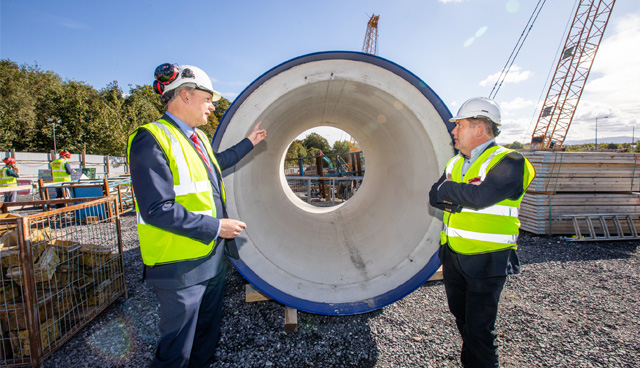
“We are getting close to spending €1 billion this year and we want to ramp that up to €1.5 billion to deliver the future water and wastewater infrastructure Ireland needs.”
A pipeline from the Parteen Basin on the Shannon to supply water to Dublin and Midlands is an option which appears to deliver the widest benefit to the greatest number of people, with the least environmental impact and in the most cost-effective way. “The Shannon is an enormous resource. It is a giant, slow-moving body of water that is effectively one of the biggest reservoirs in the British Isles. From an environmental impact perspective, the proposed pipeline, with a 1.6-meter diameter, will have a relatively low impact,” the Managing Director observes.
Once the Eastern and Midlands Region Water Supply Project is completed, Irish Water will have spent €1 billion on leak repairs, and overall leakage will be down to below 20 per cent. This is comparatively low by international standards and the utility is aiming to reduce this figure even further.
Alongside enhanced efficiency, Gleeson emphasises that the Water Supply Project will be essential to support the projected growth of the Greater Dublin Area, and outlines that this is a common approach right across Europe and beyond.
Non-compliance with European directives
While there is precedence for non-compliance with European directives, the Managing Director says that Irish Water is making real progress in this sphere, particularly in reducing the volume of untreated sewage discharged into the sea.
“A major challenge is identifying the required location, and then negotiating the compulsory purchase and planning process and legal challenges to these processes. Everyone wants a wastewater treatment plant in their town or village, just not beside their home,” he comments.
This is exemplified by the Arklow plant that has recently received approval from Minister Darragh O’Brien TD. Having initially applied for planning in the 1990s, appeals and legal challenges stymied the delivery of the project for two decades, until Irish Water began a new site selection and planning process in 2014. Construction of the project will now commence in late 2021.
We are working hard to maximise treatment capacity and quality at the Ringsend Wastewater Treatment Plant with a major upgrade project. However, it will run out of capacity towards the latter half of this decade. The Greater Dublin Drainage [GDD] project, which is currently remitted to An Bord Pleanála for a fresh planning decision, is badly needed. It must be delivered in a timely manner to provide the additional treatment capacity required to supplement the Ringsend plant from the mid-2020s. Both plants are needed to support the sustainable growth of the greater Dublin area up to 2050.”
Vision
Looking to the longer-term, Gleeson concedes that the water utility “must continue to build confidence in its ability to deliver infrastructure”. The focus, he indicates, is to deliver its current capital commitments in water and wastewater projects over the next five-to-eight years.
“Then we need to address how we support sustainable growth, particularly in our cities, but also in our small towns and villages. We must develop a national standard for drinking water and wastewater.
“While good wastewater management is critical, there are also other more significant pollution pressures on our rivers and lakes. As we improve wastewater treatment systems, all stakeholders will need to work collaboratively through the River Basin Management Planning process to reduce or eliminate these pressures at source and improve the water quality of our rivers and lakes,” he says.
Highlighting the need to sustain momentum in investment, the Managing Director acknowledges continued strong government support to capital funding but references the fact that, as a consequence of its funding model, Irish Water competes with schools, hospitals and social housing for resources. “We have made an ambitious submission for funding to the NDP for the next 10 years and that equates to about 10 per cent of the Government’s capital budget.
“We are getting close to spending €1 billion this year and we want to ramp that up to €1.5 billion to deliver the future water and wastewater infrastructure Ireland needs,” he concludes.
W: www.water.ie
Twitter: @irishwater
Facebook: IrishWaterUisceÉireann
LinkedIn: Irish Water
